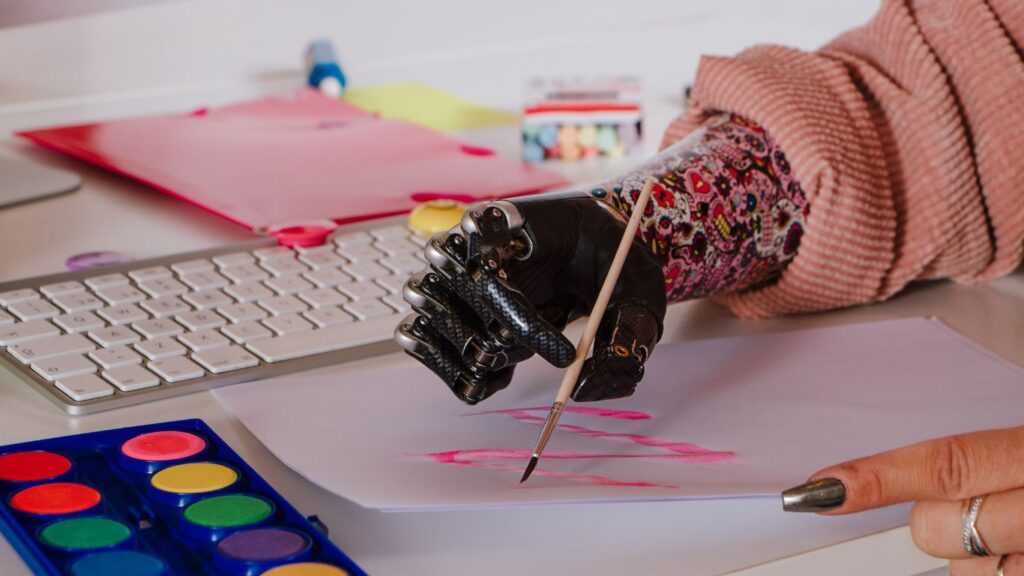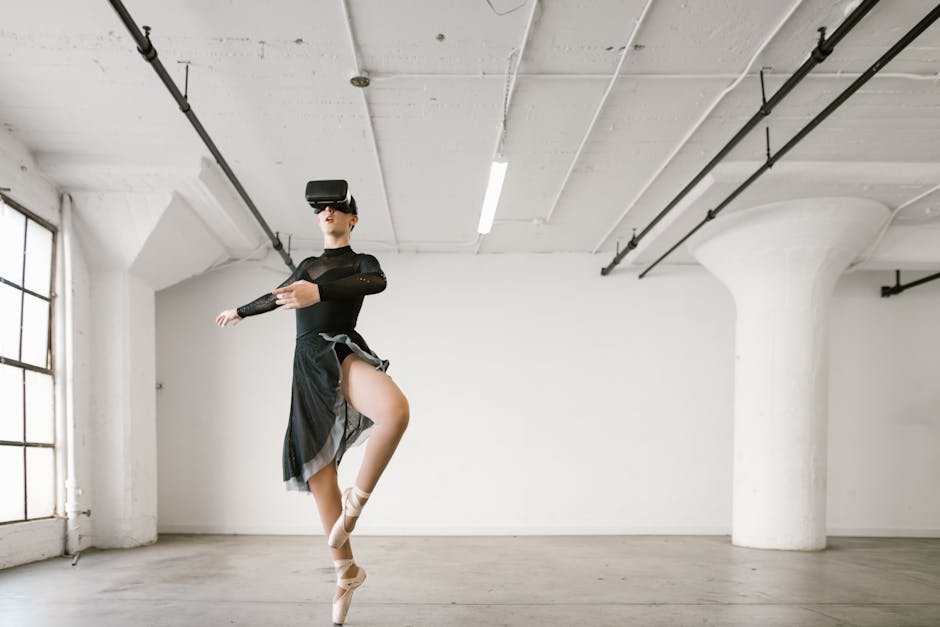In a world where technology constantly evolves, digital art therapy has emerged as a powerful tool for healing and self-expression. Combining the benefits of traditional art therapy with the accessibility of digital platforms, this innovative approach offers new avenues for emotional and psychological well-being.
I’ve seen firsthand how digital art therapy can transform lives, providing a safe space for individuals to explore their feelings and experiences. Whether you’re dealing with stress, anxiety, or trauma, the act of creating digital art can be incredibly therapeutic, offering an outlet for emotions that words often can’t capture.
Understanding Digital Art Therapy
Digital art therapy combines traditional therapeutic techniques with digital technology. It utilizes digital mediums to provide emotional and psychological benefits.
What Is Digital Art Therapy?
Digital art therapy involves using digital tools to create art for therapeutic purposes. Digital devices like tablets, smartphones, and computers enable the process. Software applications aid in drawing, painting, and creating various art forms. This therapy helps people express emotions, relieve stress, and process trauma. It also offers accessibility, making it easier for individuals who may find traditional art supplies challenging to use.
The History and Evolution of Art Therapy
Art therapy traces its roots back to the early 20th century. It began as a practice for mental health professionals to use art as a diagnostic tool. Over time, it evolved into a recognized therapeutic practice. The American Art Therapy Association, established in 1969, formalized the field.
Digital art therapy emerged in recent years due to technological advancements. Computers and digital tools expanded the possibilities for therapists and clients. This evolution allows for new methods to explore psychological well-being through creative expression.
The Therapeutic Benefits of Digital Art Therapy
Digital art therapy offers numerous therapeutic benefits, leveraging creativity to enhance emotional, cognitive, and developmental well-being.
1. Emotional Healing and Expression
Digital art therapy aids emotional healing by providing a non-verbal medium for expression. Individuals can depict emotions that feel too complex or overwhelming to articulate verbally. For example, using a tablet to draw vibrant colors to represent joy or dark shades for sadness. This method makes it possible to process emotions in a safe, non-judgmental space. Studies published in the Art Therapy Journal highlight how digital art therapy helps reduce anxiety and alleviate symptoms of depression by facilitating emotional release (Malchiodi, 2022).
2. Cognitive Improvements and Skill Development
Engaging in digital art therapy has cognitive benefits, enhancing cognitive function and skill development. Creating digital art requires focus, problem-solving, and creativity, which stimulate cognitive processes. For example, learning new software fosters adaptability and technical skills. Research in the Frontiers in Psychology journal indicates that participants in digital art therapy sessions exhibit improvements in memory and executive functioning (Kaimal & Ray, 2017). This aspect of digital art therapy is valuable for individuals recovering from traumatic brain injuries or those managing cognitive decline.
By integrating these facets, digital art therapy promotes comprehensive healing through creativity, addressing various emotional and cognitive needs.
Tools and Technologies Used in Digital Art Therapy

Digital art therapy employs various tools to facilitate creative expression and emotional healing. Here are the key technologies utilized in this innovative therapeutic approach.
Digital Painting and Drawing Software
Digital painting and drawing software provide versatile platforms for creating art. These programs include Adobe Photoshop, Corel Painter, Procreate, and Autodesk SketchBook. They offer multiple brushes, textures, and effects, enabling clients to experiment with different artistic styles without needing physical supplies. For example, Procreate is popular for its user-friendly interface and extensive brush library, which helps clients easily project their emotions onto a digital canvas. Clients can save, edit, and share their creations, making the therapeutic process flexible and accessible from anywhere.
Virtual Reality and 3D Modeling Tools
Virtual reality (VR) and 3D modeling tools add immersive dimensions to digital art therapy. Technologies such as Oculus Rift and HTC Vive, combined with software like Tilt Brush and Medium by Adobe, create interactive, three-dimensional art experiences. Clients can explore virtual spaces, sculpt objects, and paint in 3D, which adds a new layer of engagement and realism to the therapeutic process. For instance, Tilt Brush allows users to paint in a 3D space using VR controllers, offering an expansive and dynamic way to visualize and express emotions. These tools are particularly beneficial for individuals exploring spatial awareness or recovering from trauma, as the immersive experience can offer a unique therapeutic outlet.
By integrating these advanced tools, digital art therapy offers a comprehensive suite of options for emotional and cognitive healing through creativity.
Case Studies: Success Stories in Digital Art Therapy
I found several remarkable case studies highlighting the success of digital art therapy. These stories showcase the transformative power of creativity in various age groups.
Children and Adolescents
Digital art therapy has proven highly effective for children and adolescents. For instance, a study on teenagers with anxiety disorders showed significant improvement after engaging in digital art sessions. Using software like Adobe Photoshop, participants created digital paintings that helped them express complex emotions. Another case involved elementary school children diagnosed with ADHD. They used tablet-based drawing applications to focus their energy and improve concentration. Over a six-month period, teachers noticed increased attention spans and better classroom behavior.
Adults and the Elderly
Mature participants have also benefited from digital art therapy. A case involving war veterans with PTSD demonstrated the healing potential of this approach. Participants used virtual reality programs like Tilt Brush to immerse themselves in creative activities, which led to reduced symptoms of stress and anxiety. An elderly group from a senior care facility reported enhanced cognitive function after participating in digital art activities. Using 3D modeling tools, they engaged in creating art pieces, which helped improve memory retention and provided a sense of accomplishment. This multifaceted therapy has proven effective for both emotional and cognitive needs across different age brackets.
How to Get Started with Digital Art Therapy
Starting with digital art therapy involves choosing the right tools and following best practices. Let’s explore software options and tips for beginners.
Finding the Right Programs and Applications
Selecting the right digital tools ensures a smooth start. Many programs are suitable for digital art therapy:
- Procreate – Excellent for beginners and professionals, with a range of brushes and easy interface.
- Adobe Photoshop – Advanced features for detailed work, ideal for those with some experience.
- Autodesk SketchBook – User-friendly and free, great for experimenting with different techniques.
- ArtRage – Mimics traditional art mediums, offering a tactile creative process.
- Corel Painter – Emulates the feel of natural brushes and materials, providing a realistic artistic experience.
Researching these options helps in finding the right match based on your comfort and goals.
Tips for Beginners
Beginners should focus on making the process enjoyable to maximize therapeutic benefits:
- Start Simple – Use basic tools to create simple shapes and forms. They provide a good foundation and reduce the feeling of being overwhelmed.
- Experiment Freely – Test different brushes and colors without concern for the outcome. This helps in understanding tool capabilities and discovering personal preferences.
- Set Time Aside – Dedicate specific times for art therapy sessions to build a routine and ensure consistent practice.
- Seek Guidance – Consider professional guidance from a therapist experienced in digital art therapy to tailor the process to personal needs.
- Join Communities – Engage in online forums or social media groups focused on digital art therapy for support and inspiration from peers.
These tips facilitate a smooth transition into digital art therapy, making the process rewarding and effective.
Conclusion
Digital art therapy offers a unique and accessible way to harness creativity for emotional and psychological healing. By integrating modern technology with traditional therapeutic methods, it provides a versatile platform for individuals to express themselves and process complex emotions. Whether you’re a beginner or an experienced artist, the right tools and a supportive community can make your digital art therapy journey both rewarding and effective. Embrace the possibilities of digital art therapy and discover how creativity can be a powerful ally in your path to well-being.

 Jasmine Wellish is a key contributor at Info Wave Circle, known for her insightful articles and creative approach to technology and societal issues. With a deep passion for innovation and a knack for storytelling, Jasmine plays a crucial role in communicating the vision and achievements of Info Wave Circle to a broader audience.
Since joining the team, Jasmine has been instrumental in crafting compelling content that highlights the transformative potential of technology. Her work not only informs but also inspires the Info Wave Circle community and beyond. Jasmine’s dedication to exploring new ideas and her ability to convey complex concepts in an engaging manner make her an invaluable asset to the organization’s mission of fostering innovation and societal progress.
Jasmine Wellish is a key contributor at Info Wave Circle, known for her insightful articles and creative approach to technology and societal issues. With a deep passion for innovation and a knack for storytelling, Jasmine plays a crucial role in communicating the vision and achievements of Info Wave Circle to a broader audience.
Since joining the team, Jasmine has been instrumental in crafting compelling content that highlights the transformative potential of technology. Her work not only informs but also inspires the Info Wave Circle community and beyond. Jasmine’s dedication to exploring new ideas and her ability to convey complex concepts in an engaging manner make her an invaluable asset to the organization’s mission of fostering innovation and societal progress.
